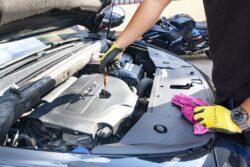Car engines are tested in several ways, we are not interested in how manufacturers test their engines for quality assurance purposes, however in this article we will discuss how you can test your engine all by yourself.
If you happen to walk into a used car dealership looking for a vehicle to buy, the dealer will surely give you the assurance that all the vehicles in his inventory are fairly used, “this car was used by an old woman, and she only drives it to church on Sundays” they might say, but unknown to you it could have been driven by a 16-year-old in a “fast and furious” manner.
So we are going to consider how you can test your used car engine to know if it’s really good, the suggestions here come in handy.
How to test your used car engine?
Here is how you can test the life of your engine. This is important because the health of an engine has a direct bearing on the amount of money you should pay for it.
Don’t let anybody tell you “it’s just an engine with 10,000 miles” when you can find out for yourself. Here are some quick health checks.
Check if the engine is burning oil
If the engine is still in the vehicle then hit the ignition key and start up the engine, get behind the car and check the nature of the gases from the exhaust pipe.
If you see something like a blue flame coming out, then just know that the engine is burning oil either from the piston rings or worn valve seals and this is not good.
Compression test
In this test you will have to make use of the compressor tester, it is a tool that should be readily handy to all car owners as it reveals a lot about car engine health.
The up-and-down movement of the piston and the rotation of the crankshaft usually results in air being trapped in the atmosphere and compressed.
For compression to take place a lot of components must be healthy and work together to produce this compression.
The following components must be in good health for good compression.
- Piston rings
- Valve seals
- Head gasket
- Cylinder
The compression test reading may vary, depending on the style of your engine and the modifications you might have done on it, but for a small engine block you might a expect a pressure reading of about 140-180 PSI (pounds per square inch)
So here are steps toward making a compression test.
- Pull out all the spark plugs
- Disengage the power going to the ignition coil
- Ensure to keep the throttle plate open for the duration of the test
- Thread the adapter into the head connecting the gauge
- Turn on the engine and record the pressure values at least six to 8 times
- Then take the average pressure reading
The average reading when compared to the expected compression value can help you know if your engine is losing compression or if it is still very much ok.
Additional actions
There are other parts of the car other than the engine that may also require some checks, for example, flood-damaged cars may have faulty electronics and you also want to avoid the quagmire of buying stolen vehicles and so many other pitfalls associated with used cars.
So how can you avoid buying a wolf in sheep’s clothing? It’s simple, get a detailed vehicle history report.
The vehicle history report provided by Detailed Vehicle History is a piece of all-encompassing information that will shed light on all you ever wanted to know about any used vehicle.










